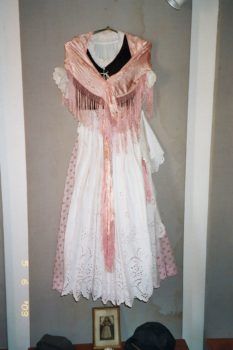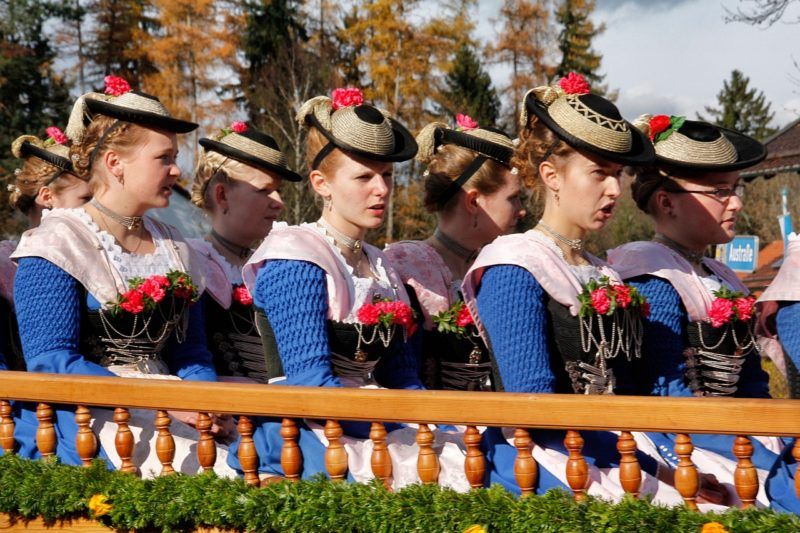October 2012 – February 2013
From the Mountains to the Sea – Germany and its Costumes – Dirndl & Lederhosen
German-American Heritage Museum of the USA™

Follow us

Traditional costumes of South Tyrol in Northern Italy

Women’s dress of the Danube Swabians

Two young men in traditional guild dress
2012/2013
From the Mountains to the Sea – Germany and its Costumes – Dirndl & Lederhosen
Dirndl and Lederhosen — for many people the traditional peasant clothing of southern Bavaria and Austria is the archetypal image of Germany. However, they are simply two examples of traditional German clothing called “Tracht”. This exhibit portrayed the diverse styles worn by German-speaking peoples from the black dresses embroidered with silver and covered by long white aprons worn on the Friesian Islands, the distinct Black Forest Bollenhut to the colorful costumes of the Alpine regions.
The German word “Tracht” goes back to the Old High German word “traht(a)”, simply meaning “that which is being worn”. It refers to traditional, historic costumes and accessories of certain occupational and regional groups, which convey a multitude of information for the beholder. A distinction is made between occupational costumes, guild costumes, official attire and regional costumes. Occupational costumes signify a certain occupation; official attire represents the embodiment of a public office; and guild costumes were being worn by such craftsmen, who belonged to a municipal guild. Even today, young journeymen in Germany (e.g., carpenters, roofers and builders) can be seen in their distinct attire. Regional costumes, on the other hand, originated in rural areas. Even though traditional costumes were worn all over Europe, they were predominant in Germany.
The first peasant costumes already emerged in the 15th century, but they did not become popular in Germany until the 19th century, a period in which people focused on their homes and their local, regional, and national characteristics.
Mostly worn during special occasions, the costumes most of all signified provenience, but also religion, level of grief, social background and the extent of wealth could be presented by the costumes. Furthermore, especially women’s dress provided information about the wearer’s social and marital status. An apron tied on the left means the lady is unmarried, whilst one tied on the right, means she is already married.
Today, traditional dress has lost many of its implications, and does not play as big a role in society. But people still wear traditional attire in many places on special occasions to memorize customs from the past and honor traditions. There are still many clubs for the sustainment of traditional costumes in Germany, Austria and Switzerland, and traditional costumes are still being worn often for certain festivities, especially in the Black Forest and in Bavaria. The traditional Bavarian Dirndl, although not considered genuine Tracht, for example, is an important accessory for many visitors of the Oktoberfest in Munich.
